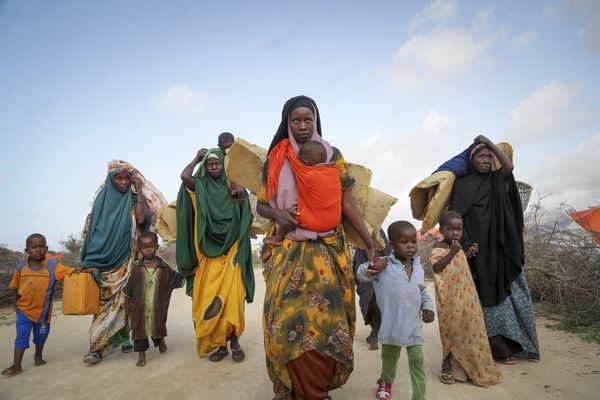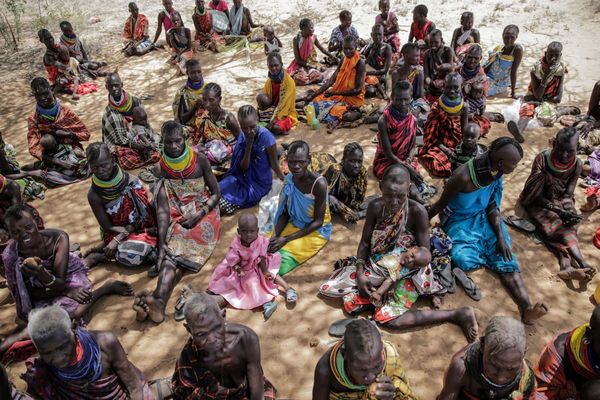
The United States announced at a U.N. conference on Wednesday nearly $524 million in additional humanitarian aid for the Horn of Africa that aims to put a spotlight on the extreme effects of climate change and the worst drought in the region in 40 years — and the need for more than $5 billion.
The U.N. has appealed for $7 billion and has received just $1.6 billion — far from enough to help the 43.3 million people in need of assistance in Somalia, Ethiopia and Kenya or even just the 21 million among them who don’t have access to enough food.
The United States is the largest provider of humanitarian aid to the region, and Linda Thomas-Greenfield, the U.S. ambassador to the United Nations, told the pledging conference that the $524 million in new funds will bring the total U.S. humanitarian contribution to the region to $1.4 billion for the fiscal year ending Sept. 30.
When Thomas-Greenfield visited the Somali capital, Mogadishu, in September, she said she heard firsthand “how the drought impacted the food supply and the increased potential for famine” and announced more than $40 million in additional funding for the country.
“Sadly, the humanitarian needs in Somalia, Ethiopia, and Kenya are now greater than ever with over 23.5 million persons facing acute food insecurity,” she said in a statement. “That’s why the United States is continuing to support the humanitarian response in the Horn with this new funding.”
The U.S. said its new funding will support refugees, asylum seekers, internally displaced and stateless people, and millions affected by conflict, drought and food insecurity. It said nearly $108 million of the additional funding is from the Department of State’s Bureau of Population, Refugees, and Migration and more than $416 million is from the U.S. Agency for International Development.
The humanitarian agency CARE said the crisis in the region resulting from two failed rainy seasons, two locust invasions, conflict and rising commodity prices in the wake of Russia’s invasion of Ukraine and the ongoing war has decimated communities and led to the migration of more than 2.5 million people. Raising livestock used to be a key way of earning money for many communities in the region, but CARE said due to the extreme weather more than 13.2 million livestock have died.
In Somalia, where more than 6 million people are going hungry, a famine has yet to be declared, but some humanitarian and climate officials have warned that current trends are worse than in the 2011 famine, in which 250,000 people died.
Parts of Somalia and Ethiopia are experiencing flooding during the ongoing rainy season, and millions of people have been displaced. The affected areas, mostly occupied by herders, had seen prolonged dry seasons that left livestock dead.
Somalia is also grappling with insecurity due to the al-Shabab extremist group, which has ties to al-Qaida and has fought the Somali federal government in Mogadishu for years. The group intensified attacks on military bases in recent months after losing territory in rural areas to government forces.
In Ethiopia’s northern Tigray region, nearly all the 6 million people rely on food aid after two years of civil war. Government-imposed restrictions on humanitarian relief had pushed parts of the region to the brink of famine until aid deliveries resumed after the war stopped with a cease-fire in November.
But the U.N. and USAID, the U.S. aid agency, announced earlier this month that they were suspending all food assistance to investigate the theft of humanitarian supplies.
The International Rescue Committee’s president, David Miliband, said U.S. funding “is helping keep famine at bay,” especially in Somalia, and urged other nations to step up contributions and ensure full funding of the appeal.
He also called for “a change in approach to famine response and ... (to) prevent catastrophe before it strikes,” pointing to research from the 2011 famine that showed a quarter of a million people died before famine was declared and there was a surge in the international response.
“Effective early warning systems help identify areas that are at risk of famine before the situation becomes critical, such as weather patterns, crop yields, and food prices, and should trigger action for the most at-risk by funneling cash, food and other support before people experience” acute food insecurity let alone famine, he said in a statement.










